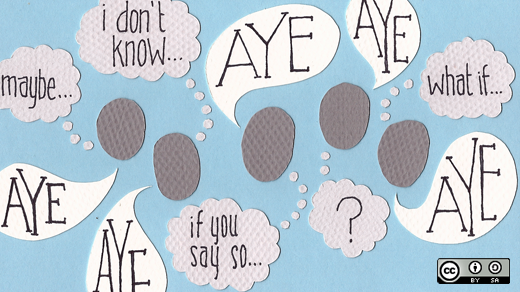It's been a year since the launch of The Open Organization, and one of the things I'm most proud of is the conversation we've sparked both inside and outside of Red Hat about what an open organization is, and what that means for the future of leadership.
I spend a lot of time thinking about how we will sustain and scale our open organization, even as it doubles in size. So it's inspiring to see that, much like the open source development model itself, The Open Organization has become a catalyst for change. Many times over the past year, people have mentioned the book to me during a job interview, sharing a particular example or story that sparked their interest in Red Hat.
"Open" truly is our compass, and I'm pleased to share a few more things we've learned about how to apply open source principles to the way we run our open source company.
Defining meritocracy
One open source principle that's always resonated with us at Red Hat is the ideal of meritocracy. We want to be a place where good ideas can come from anyone or anywhere, and the best ideas win. In fact, I'd go so far as to say that meritocracy is a requirement of any open organization. But I've also come to recognize that diversity is a key component to a thriving meritocracy, and meritocracy can be used as an excuse for elements of our culture that aren't inclusive or productive.
So a few years ago, we took the time to define meritocracy as a leadership capability, and to get clear on what we mean when we talk about meritocracy at Red Hat:
"Rewarding the best ideas, no matter where they come from."
We also defined "what good looks like" when practicing meritocracy, at increasing levels of proficiency:
- Foundational: Focuses on the merit of an idea rather than where it came from; respects others' abilities and talents regardless of their role within the company; does not use one's title or leader's title to influence or persuade
- Experienced: Encourages ideas and solutions from all team members; recognizes those who contribute the most; rewards and advances department or team members based on ability and talent
- Advanced: Raises the visibility of departments or teams across the company that are doing their best work; escalates great ideas from anyone within the organization to the appropriate parties
- Expert: Creates an environment where influence is driven by—good ideas and contributions—not titles
Any strength, if over-used, can become a weakness. So we also defined "overuse" and "underuse" of meritocracy:
Underuse
Too little meritocracy looks like:
- Does not invite diverse perspectives on key decisions or ignores their input
- Does not support decision-maker after giving feedback
- Values only "what" was achieved rather than "how" something was achieved
Overuse
Too much meritocracy looks like:
- Uses meritocracy as an excuse for disrespecting a decision-maker or to push a personal agenda
By defining how meritocracy is put into practice as a leadership capability, we are able to recruit people who value meritocracy and help everyone see how to practice it in their daily work. It gives us a common language for describing what can often be an intangible concept.
Developing an Open Decision Framework
Passionate people—Red Hatters—have made our company what it is today: the first $2 billion company in open source. The challenge for us is to focus that passion toward a shared vision, and continually facilitate the open exchange of ideas.
The question we often ask ourselves is: How do we tap into the best ideas and create room for passionate debate, while also keeping a respectful environment and getting things done?
We've found that the intensity of passion and emotion in our company can actually discourage some Red Hatters from participating in conversations, or lead them to then shut down in a debate. It's hard to get to the best ideas, if we're only hearing from a fraction of our population.
That's part of the reason we created the Open Decision Framework, a collection of best practices for making decisions and leading projects at Red Hat. It's the collective wisdom of Red Hatters, compiled into a flexible framework that helps our decision makers and leaders seek out diverse perspectives and collaborate across teams and geos, to make better decisions.
The Open Decision Framework is ever-evolving, as we learn new things all the time. Much of it is unique to Red Hat's culture. But we've decided to share it with the world, by publishing a community version under a CC BY-SA-4.0 license.
As you can see, many of the "best practices" are built upon open source principles. By applying those to how we make decisions and lead projects, we get better ideas and a clearer understanding of the impacts of our decisions, while also building trust and respect between teams. In short, we're able to tap into the passion and creativity of our people, while also providing guardrails for productive participation and accountability for decision-making and execution.
The open organization is a work in progress. We continue to walk a fine line between igniting passion and adding structure. There will always be tension between our values of freedom, courage, commitment, and accountability, and living those values in balance means that sometimes sparks will fly. But that's what's kept me at Red Hat for almost 15 years, and it's what differentiates an open organization.






1 Comment